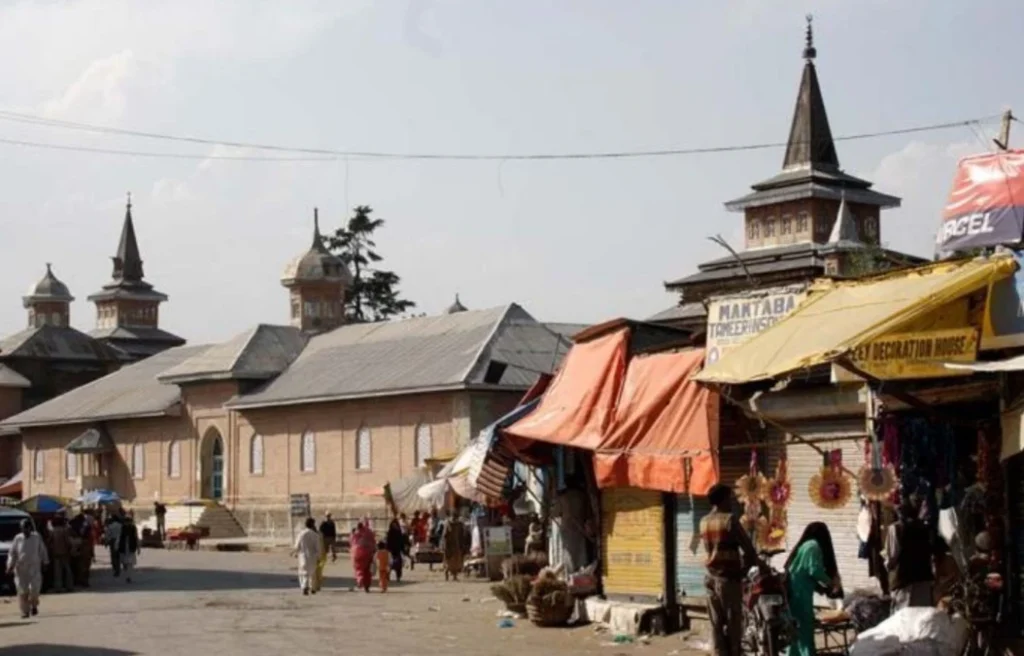“Discover Shopian District, known for its breathtaking valleys, vibrant culture, apple orchards, and scenic beauty, offering a perfect blend of nature and adventure.”

Shopian District: Scenic Valleys, Apples, and Cultural Charm
Shopian District is a picturesque region located in the southern part of the Indian-administered union territory of Jammu and Kashmir. Nestled amidst the pristine Himalayan mountains, Shopian is renowned for its breathtaking natural beauty, lush apple orchards, and rich cultural heritage.
The district covers an area of approximately 651 square kilometers and is home to a population that predominantly relies on agriculture for their livelihood. The fertile soil of the region supports the cultivation of various crops, but it’s the apple orchards that take center stage. Shopian is often referred to as the “Apple Bowl of India” due to its high-quality apple production. The apple harvest season, during autumn, transforms the landscape into a canvas of vibrant colors, with trees laden with juicy fruit.
The town of Shopian, the district’s administrative center, has a history that dates back to ancient times. It has seen the rise and fall of various empires, leaving behind traces of their influence on the local culture and architecture. The town is adorned with traditional Kashmiri wooden houses, intricate mosques, and shrines, each telling a story of the past.
The district is not just about its natural beauty and historical significance; it’s also known for its handicrafts. Skilled artisans produce exquisite items like Pashmina shawls, rugs, and saffron, which are highly sought after both within India and internationally.
Shopian’s geographical location has unfortunately placed it in the midst of regional conflicts and political tensions. The area has witnessed its share of security challenges and disruptions over the years, affecting the lives of its residents. Despite these challenges, the resilient spirit of the people remains strong as they continue to preserve their way of life and uphold their cultural heritage.
Tourism is another facet that holds immense potential for Shopian District. The serene environment, lush meadows, and surrounding hills make it an ideal destination for nature enthusiasts and adventure seekers. The district offers opportunities for trekking, bird watching, and photography, ensuring a memorable experience for those who venture into its breathtaking landscapes.
In recent years, efforts have been made to promote sustainable tourism and eco-friendly practices in the region. This aims to protect the environment, support local livelihoods, and provide visitors with an authentic and responsible travel experience.
In conclusion, Shopian District is a captivating blend of natural beauty, cultural richness, and historical significance. From its apple orchards to its handicrafts, and from its traditional architecture to its resilient inhabitants, every aspect of the district contributes to its unique identity. While challenges persist, the district’s potential for growth, both in terms of tourism and economic development, remains promising. As visitors explore its picturesque vistas and immerse themselves in its vibrant culture, Shopian continues to weave its own narrative in the tapestry of Jammu and Kashmir.
Famous Places in Shopian District
Shopian District in Jammu and Kashmir is dotted with several famous places that showcase its natural beauty, cultural heritage, and historical significance. Here are some of the notable attractions in the district:
Ahrabal Waterfall: Ahrabal Waterfall is a mesmerizing natural wonder located amidst lush green forests. The cascading waterfall is a popular destination for nature enthusiasts and offers a serene ambiance for picnics and relaxation.
Shri Ram Temple, Rajpora: This ancient temple holds great religious significance for the locals. The intricate architecture and spiritual atmosphere make it a must-visit for those interested in exploring the religious and cultural heritage of the region.
Mughal Road: Historically important, the Mughal Road is an ancient trade route that connected Kashmir with the rest of the Mughal Empire. Today, it offers a scenic drive through picturesque landscapes, making it a favorite among tourists.
Herbal Garden, Keller: The Herbal Garden in Keller showcases a wide variety of medicinal and aromatic plants. It’s not only an educational experience but also a soothing place to immerse oneself in the natural world.
Chittergul: This meadow is famous for its stunning views of the surrounding mountains. It’s a popular spot for trekking and camping, allowing visitors to reconnect with nature and escape the hustle of city life.
Shopian Town: The district’s administrative center, Shopian Town, offers a glimpse into the local lifestyle and culture. The town is adorned with traditional Kashmiri architecture and is bustling with markets and shops.
Hirpora Wildlife Sanctuary: For wildlife enthusiasts, this sanctuary is a treasure trove. It’s home to various species of flora and fauna, providing an opportunity for nature lovers to observe the region’s biodiversity.
Dubjan: This village is renowned for its saffron cultivation. Visitors can witness the process of saffron extraction and gain insight into the local agricultural practices.
Jamia Masjid, Shopian: An architectural gem, the Jamia Masjid showcases the region’s rich Islamic heritage. The intricate design and historical importance make it a fascinating site to explore.
Keegam: Another picturesque village, Keegam is known for its apple orchards and panoramic views. It offers a peaceful retreat for those seeking tranquility.
These are just a few of the famous places that contribute to Shopian District’s charm. Each destination offers a unique experience, whether it’s a blend of natural beauty, cultural immersion, or historical exploration. Visitors to Shopian are sure to be captivated by its diverse attractions and the warm hospitality of its people.
Read More :-
Samba District: Historic Landmarks, Scenic Beauty, and Culture
